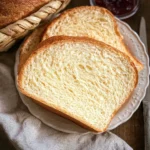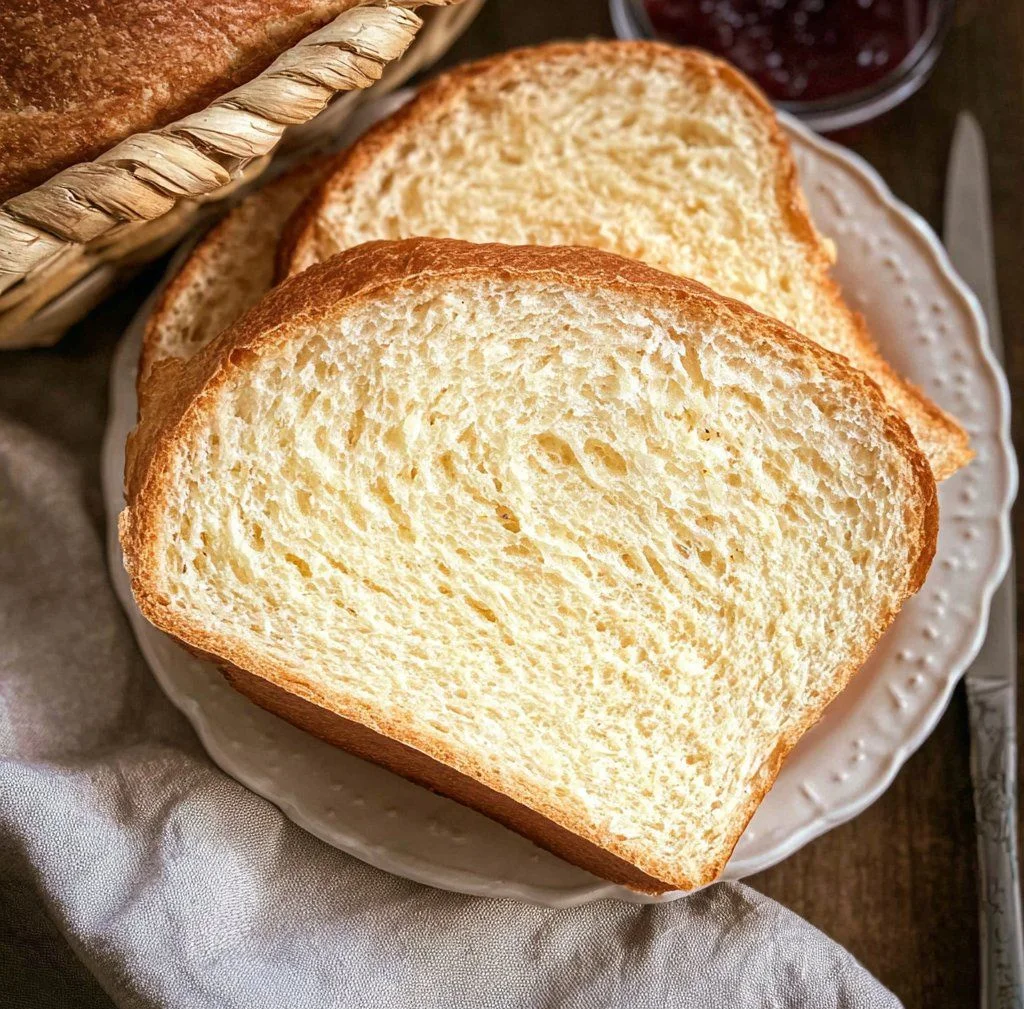Potato bread is soft, fluffy, and surprisingly easy to make. By adding mashed potatoes to the dough, you get a loaf that’s extra moist and tender, with a slightly sweet flavor. It’s perfect for sandwiches, toast, or simply enjoying warm with butter. Once you try it, you’ll want to make it again and again!
Why We Love This Potato Bread Recipe
One of the standout features of potato bread is its incredible moisture, a quality that sets it apart from standard loaves. The addition of mashed potatoes offers a soft, tender bite that feels luxurious on the palate. It isn’t just about taste; the nutritional benefits from the potatoes add to the overall appeal, making it a hearty choice. Furthermore, the use of simple ingredients ensures you won’t have to hunt down any obscure items—everything you need is likely already in your kitchen. As you create this loaf, you’ll be greeted with a pleasant aroma that fills your home, wrapping you in comfort from the very first moments of mixing. There’s a certain joy in crafting something so delicious from such straightforward components, and the satisfaction of making bread from scratch is truly rewarding.
Ingredients for Potato Bread
To bake your own potato bread, gather the following ingredients:
- 1 tablespoon instant yeast
- 1/2 cup sugar
- 1 1/4 to 1 1/2 cups lukewarm water or potato water
- 3/4 cup (12 tablespoons) butter, at room temperature
- 2 1/2 teaspoons salt
- 2 large eggs
- 1 cup mashed potatoes (from about 1/2 pound of potatoes)
- 6 1/2 cups all-purpose flour
These ingredients are simple yet effective, combining to create a bread that’s perfect for any occasion.
How to Make Potato Bread
Making potato bread is a straightforward process that requires a bit of time and patience but promises an incredible payoff. Start by beating together all the dough ingredients using the paddle attachment of your stand mixer. This will take approximately 4 to 5 minutes at medium-high speed. As you mix, be sure to stop occasionally to scrape down the sides and bottom of the bowl until the mixture is smooth and shiny.
Next, switch to the dough hook and knead the dough at medium speed for about 7 minutes. You may need to stop a couple of times to scrape the dough into a ball to ensure even kneading. Once the dough has been kneaded, scrape it into a lightly greased bowl. Cover the bowl with greased plastic wrap and refrigerate it overnight or for up to 24 hours. This resting period enhances the flavor and texture of your bread.
After the resting time is complete, remove the dough from the refrigerator and divide it in half. Shape each half into two logs of about 9 inches in length. Place the logs into greased 9 x 5-inch bread pans, ensuring they are well positioned. Cover the pans with greased plastic wrap again and let them rise until the dough rises about an inch above the rim of the pans. This can take anywhere from 2 to 4 hours, depending on the ambient temperature and yeast activity.
Once your dough has risen sufficiently, it’s time to bake! Preheat your oven to 350°F. Place the loaves in the oven and allow them to bake for 25 minutes. After this initial period, tent the loaves with aluminum foil to prevent over-browning and bake for an additional 15 to 25 minutes. You’ll know they are done when the loaves are golden brown and register an internal temperature of at least 190°F. Once baked, remove the loaves from the oven and let them rest for a few minutes before transferring them to a wire rack to cool.
How to Serve Potato Bread
Now that you’ve successfully made your potato bread, it’s time to think about how you will serve it. One of the best aspects of this bread is its versatility. You can slice it and serve it warm, slathered with butter alongside soups and stews for a comforting winter meal. Alternatively, toast slices to golden perfection, and top them with jam or honey for a delightful breakfast treat.
Another serving option is to use potato bread for sandwiches. The excellent moisture content adds just the right amount of heft, making it an ideal choice for a hearty sandwich. Fill it with your favorite ingredients—think roasted vegetables, deli meats, or even classic peanut butter and jelly for a twist on the traditional.
In addition to being a fantastic standalone dish, consider using your potato bread to create a savory stuffing for poultry dishes. Its unique texture allows it to absorb flavors beautifully, enhancing the overall dish. The choices are endless; your potato bread can accompany a meal in many delicious forms!
Expert Tips for Potato Bread
To ensure your potato bread turns out perfectly every time, keep the following tips in mind:
- Use Real Potatoes: While instant potato flakes are convenient, using freshly mashed potatoes will give your bread better flavor and moisture.
- Check Your Yeast: Ensure your instant yeast is fresh so that your dough rises as expected. If you’re unsure, perform a quick proofing test by combining the yeast with warm water and a bit of sugar. If it bubbles and foams within a few minutes, it’s active and ready to use.
- Temperature Matters: Lukewarm water is essential for activating the yeast without killing it. Make sure it is warm but not hot to the touch.
- Don’t Rush the Rising: Allow sufficient time for your dough to rise. If your kitchen is cool, consider placing it in a warmer location, such as an oven with the light on, to speed up the process slightly.
- Experiment with Flours: While all-purpose flour is the mainstay for this recipe, feel free to mix in some whole wheat or other flours to add nutritional benefits and flavor.
How to Store Potato Bread
Proper storage will keep your potato bread fresh and enjoyable for as long as possible. If you plan to consume it within a couple of days, store it at room temperature in a bread box or a sealed plastic bag to maintain its moisture. If you live in a more humid environment, wrapping it in a kitchen towel before placing it in the bag may help prevent sogginess.
For longer storage, consider freezing it. Allow the bread to cool completely after baking. Then, wrap it tightly in plastic wrap or aluminum foil and place it in a resealable freezer bag. Potato bread can be stored in the freezer for up to three months without losing its wonderful flavor. To enjoy, simply thaw at room temperature or reheat slices in the toaster for a few minutes.
Variations of Potato Bread
While classic potato bread is already a treat, you can customize it in numerous ways to fit your taste preferences. Here are a few variations to inspire you:
- Herbed Potato Bread: Adding fresh herbs like rosemary, thyme, or even chives to the dough will impart a beautiful fragrance and flavor, making it an excellent companion to soups and roasted meats.
- Cheese Potato Bread: Incorporate shredded cheese into the dough or sprinkle it on top before baking. This yields a delightful cheesy crust with every slice.
- Sweet Potato Bread: Substitute regular potatoes with sweet potatoes for a new flavor profile. Sweet potato bread tends to have a hint of sweetness, which pairs well with cinnamon and nutmeg.
- Seeded Potato Bread: Top your loaves with seeds, such as sesame or poppy seeds. This adds a delightful crunch and beautiful appearance.
- Nutty Potato Bread: Incorporate chopped nuts like walnuts or pecans for a wholesome twist that also adds texture to the bread.
By experimenting with these variations, you can create a personalized loaf that fits your family’s taste and dietary preferences.
Frequently Asked Questions
What is potato bread?
Potato bread is a type of bread made with mashed potatoes, which contributes to its unique moist texture and flavor. The recipe incorporates simple ingredients like flour, yeast, and butter, making it an easy choice for home bakers.
How does potato bread compare to traditional bread?
Potato bread tends to be softer and moister than traditional bread. The mashed potatoes not only enhance the bread’s flavor but also help it retain moisture, keeping the loaf fresh for a more extended period.
Can I use leftover mashed potatoes to make potato bread?
Absolutely! Leftover mashed potatoes are perfect for this recipe. They add extra flavor and moisture, so don’t hesitate to repurpose your leftovers for an incredible homemade loaf.
Can I use different types of flour for potato bread?
Yes! While all-purpose flour is the standard, you can experiment with other types of flour, such as whole wheat or bread flour, to customize the texture and nutritional profile of your potato bread.
How should I store my potato bread?
Store at room temperature in a bread box or sealed plastic bag for up to a few days. For longer storage, wrap in plastic wrap and freeze for up to three months.

Potato Bread
Ingredients
For the dough
- 1 tablespoon instant yeast Make sure it is fresh.
- 1/2 cup sugar Adds sweetness.
- 1 1/4 to 1 1/2 cups lukewarm water or potato water Temperature is important for activating yeast.
- 3/4 cup butter, at room temperature Provides richness.
- 2 1/2 teaspoons salt Enhances flavor.
- 2 large eggs Helps in leavening.
- 1 cup mashed potatoes From about 1/2 pound of potatoes.
- 6 1/2 cups all-purpose flour The main structure of the bread.
Instructions
Preparation
- Beat together all dough ingredients using the paddle attachment for approximately 4 to 5 minutes at medium-high speed.
- Switch to the dough hook and knead the dough at medium speed for about 7 minutes, scraping down the sides as needed.
- Scrape the dough into a lightly greased bowl and cover with greased plastic wrap.
- Refrigerate the dough overnight or for up to 24 hours.
Baking
- Remove the dough from the refrigerator and divide it in half.
- Shape each half into two logs of about 9 inches in length.
- Place the logs into greased 9 x 5-inch bread pans.
- Cover with greased plastic wrap and let rise until they are about an inch above the rim of the pans, which can take 2 to 4 hours.
- Preheat your oven to 350°F.
- Bake the loaves for 25 minutes, then tent with aluminum foil and bake for an additional 15 to 25 minutes.
- Loaves are done when golden brown and register an internal temperature of at least 190°F.
- Remove from oven and let rest for a few minutes before transferring to a wire rack to cool.
Send me this recipe!
Just enter your email below and get it sent straight to your inbox!


